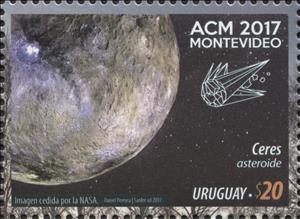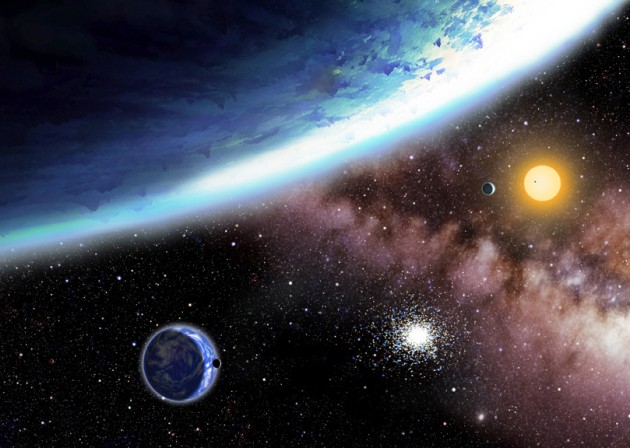Stamp: Ceres - Asteroid (Uruguay 2017)
Ceres - Asteroid (Uruguay 2017)
09 April (Uruguay ) within release ACM 2017, Montevideo goes into circulation Stamp Ceres - Asteroid face value 20 Uruguayan peso
| Stamp Ceres - Asteroid in catalogues | |
|---|---|
| Michel: | Mi: UY 3548 |
| WADP Numbering System - WNS: | WAD: UY 012.17 |
Stamp is horizontal format.
Stamp from souvenir sheetAlso in the issue ACM 2017, Montevideo:
- Stamp - Ceres - Asteroid face value 20;
- Stamp - CG67P - Comet face value 20;
- Stamp - Pluto - Trans-Neptunian Object face value 20;
Stamp Ceres - Asteroid it reflects the thematic directions:
Astronomy is a natural science that studies celestial objects and the phenomena that occur in the cosmos. It uses mathematics, physics, and chemistry in order to explain their origin and their overall evolution. Objects of interest include planets, moons, stars, nebulae, galaxies, meteoroids, asteroids, and comets. Relevant phenomena include supernova explosions, gamma ray bursts, quasars, blazars, pulsars, and cosmic microwave background radiation. More generally, astronomy studies everything that originates beyond Earth's atmosphere. Cosmology is a branch of astronomy that studies the universe as a whole. .
A conference is a meeting, often lasting a few days, which is organized on a particular subject, or to bring together people who have a common interest. Conferences can be used as a form of group decision-making, although discussion, not always decisions, is the primary purpose of conferences. The term derives from the word confer.
Outer space (or simply space) is the expanse that exists beyond Earth's atmosphere and between celestial bodies. It contains ultra-low levels of particle densities, constituting a near-perfect vacuum of predominantly hydrogen and helium plasma, permeated by electromagnetic radiation, cosmic rays, neutrinos, magnetic fields and dust. The baseline temperature of outer space, as set by the background radiation from the Big Bang, is 2.7 kelvins (−270 °C; −455 °F)



